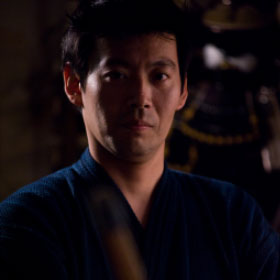Need Kendo Instructions?
You Got It!
You Got It!
Striking fundamentals - Correcting a hard strike
by Charles
(RSA)
Imafuji-sensei, my name is Charles, I hope you can assist.
I have been training for two years and have found a flaw in my fundamentals. Due to the work I am strong in my wrists, forearm and shoulders. This results in me tensing up when facing an opponent as I fear that I will hurt them. This is a failing I have and results in slow and soft strikes with a noticeable bounce.
Now during training jikeiko, this flaw has become more pronounced. I have forced myself to relax and this has on a few occasions resulted in what I consider to be a "soft" strike to be complained about by my training partners which in turn caused me to start tensing up. How do I correct this, where do I start?
Answer: Thank you for your question. This is a very difficult question to answer without seeing your kendo. But I do my best.
First of all, learn the good strike from your sensei. How do you learn?
- Watch: Watch the entire movement of your sensei’s strike. How does your sensei strike? What does a good strike look like?
- Listen: Listen to the sound of strikes and remember the sound. The good strikes and bad strikes don’t sound the same.
- Feel: Remember how you feel when you are hit by your sensei. What kind of impact you are getting from his/her strike? You must know how the good strike feels like.
Based on what should be a good strike that you learned from above, you need to analyze your strike.
Start by asking yourself, “why is my strike so hard?”. Are you really tense as soon as you take your stance? Or is it because you react to your opponent? Is your entire body tense or only upper body? What are you thinking when you are in your stance?
We all know what we think influences how we act. As you said, you think you should strike “not strongly” then your strike becomes too soft.
Probably, you should learn when to tense your body. You cannot relax all the time. You need to relax and tense your body when necessary.
How do you learn that? You can ask your teacher. You can go through the learning process I explained above. You need to watch, listen to and feel the good strikes. Have your training partner give you feedback. Just ask your training partner to tell you if your strike was too strong or soft.
You should know what you are doing if you want to fix your kendo first. So, start analyzing!
